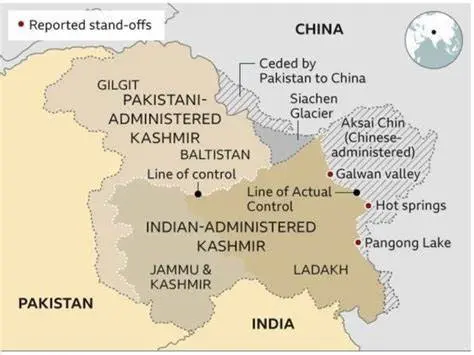
Did Anyone In India Really Believe They Achieved Anything of Value?
Simply disagreeing to the actual border only allows the Sinofication of the “occupied” territory.
Despite trying to characterize the agreed upon mutual withdrawal of military forces from the Line of Actual Control (LAC) north and south of Pangong Lake in February, India has since then had to acknowledge the truth (as we indicated they would here) that this is far from any significant achievement because there was supposedly another agreement for a broader withdrawal that China has refused to honor and have told India that they “should be happy with what has been achieved”. (source here)
Since February, China has refused any degree of withdrawal from the Hot Springs and Depsang Plains. Why? Probably because they do not need to.
With respect to the Hot Springs position, which is a bit of an Indian salient of the LAC, the Chinese side has developed better transportation infrastructure and certainly sees this salient as a comparatively easy victory when they choose to seize this land in their march to the Shyok River valley and control over the north access to Pangong Lake.
Incursions are reported to occur regularly across the LAC in the Depsang Plain area where Chinese patrols interrupt Indian road traffic. India is working to develop highway infrastructure that can reinforce Indian forces in the region. But infrastructure development will soon heavily favor China, putting them in an easy position to roll across the Plain and the Indian outpost and airfield at Daulat Beg Oldie en route to the Siachen Glacier where Indian and Chinese forces remain in a standoff.

Without a substantial change in India’s approach to China, the LAC is effectively becoming the acknowledged and acceptable border between India and China. And shortly, China will be in such a dominant position that it will seize whatever other territory it desires without much more difficulty than the occupation of the South China Sea (just as we have been indicating here and here).
